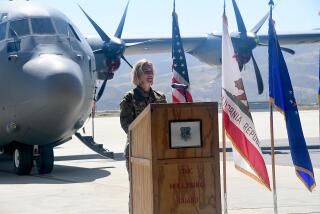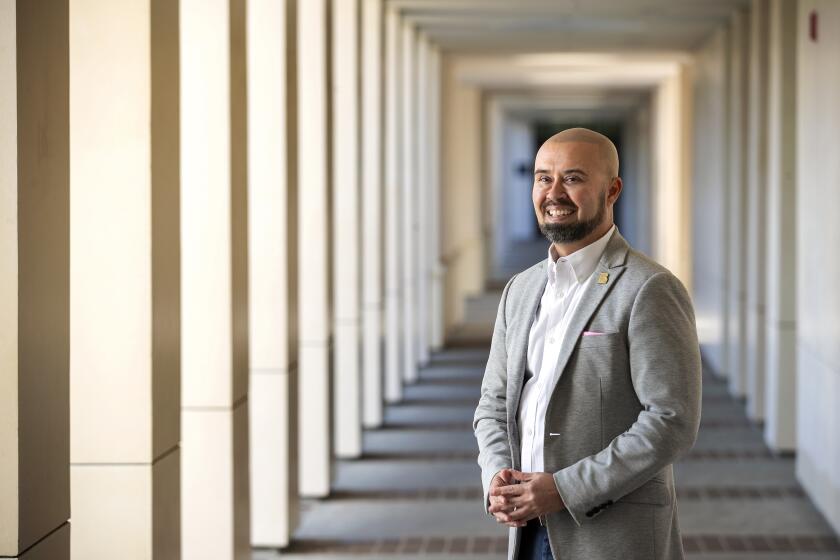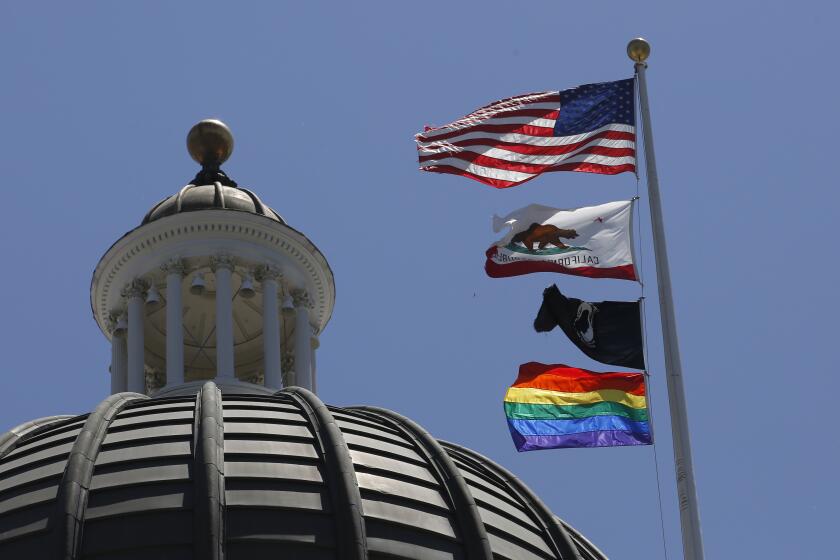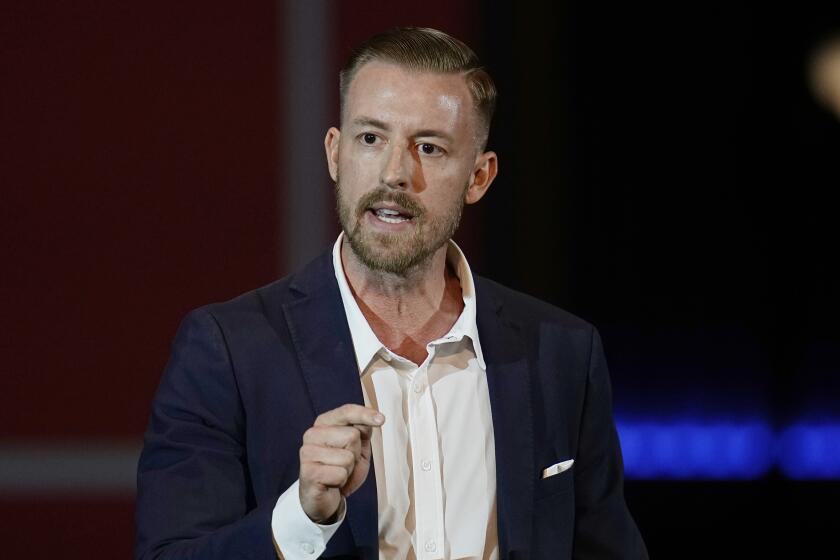Program Seeks to Reduce Latino-Armenian Tensions at School
John Salapa’s ninth-graders have been at Grant High for only two months, but they have already learned a few things.
They know that Armenian American students hang out on the north side of the quad under the big trees and that Latinos hang out on the south.
They know that Armenian Americans’ dress is sort of conservative and Latinos’ dress sort of baggy--or at least that’s what people expect.
And they know what October means: fights between Armenian Americans and Latinos, who at Grant are primarily Mexican American.
“It’s a tradition,” one said. “That’s why they call it the October riots. They probably schedule it.”
The comment was voiced during a carefully moderated discussion led by a communications student from Cal State Northridge.
The discussion was part of a nationwide pilot initiative, “Communicating Common Ground,” that seeks to eradicate hate speech and ethnically based campus violence at 30 sites nationwide, in places as different as Baltimore and Fargo, N.D.
Locally, Northridge professor Kathryn Sorrells and a cadre of 35 intercultural communications students are going into three freshman classes once a week for seven weeks this fall to talk about stereotypes, race, history, tolerance and what can be done to end ethnic violence on campus.
The project is co-sponsored by the Southern Poverty Law Center, the National Communication Assn., Campus Compact and the American Assn. for Higher Education.
The goal at Grant, Sorrells said, is to educate new students before they are indoctrinated in the campus culture.
For as long as most people there can remember, tensions between Armenians and Latinos at Grant have flared in late October. The 3,300-member student body, representing 32 cultures, is one of the most diverse in the San Fernando Valley. In general terms, the school is 4% Asian, 6% African American, 2% Filipino, 51% Latino and 36% white, which includes Armenian American.
No one seems to know how or why the annual fights began.
One district official speculated that tension between the Latino and Armenian students may have originated from disputes over relief efforts in the mid-1980s after earthquakes in Mexico and Armenia. At the time, students from each ethnic group claimed that the other received more empathy and relief, Fran Ramirez, a Los Angeles Unified School District administrator who was a Grant assistant principal then, said in an interview last year with The Times.
Those long-standing tensions exploded into a lunchtime melee last October involving more than 200 students after a Latina and an Armenian American girl fought over a boy.
In 1994, two Armenian American boys were stabbed during a fight outside the school. Later the same day, a 16-year-old Latino was wounded in the calf during a drive-by shooting.
The anniversary of last year’s fight passed uneventfully Friday.
Many students arrive at Grant with stereotypes and experiences already in place from middle school, Sorrells said.
In the first session with Salapa’s class, the moderators let the students sit where they wished. The class broke up along ethnic lines: Latinos in some groups. Armenian Americans in others. Boys separate from girls.
Over time, the moderators are working to change the pattern. The steps are small and undramatic.
At the beginning of each session, the Northridge students make the freshmen break the ice. They have to sit with students outside their cliques and talk about their differences--and similarities.
Led by Sorrells, the students talk about the early decades of this century, when 1.5 million Armenians in the Ottoman Empire, which is now Turkey, were killed. The Turkish government denies that the Armenian genocide ever happened.
Then students talk of the history of immigrants from Mexico and Central and South America. They discuss racial tensions and why they happen.
Sorrells paces the room, tossing out questions. What causes tensions, she asked in one session.
“People find groups,” said one boy. “They start talking to these people, but not those people.”
Another student suggested insecurity and jealousy.
(Students’ names have been withheld at the request of program organizers because of the sensitivity of the discussions.)
“It’s parents,” said an Armenian American girl. “They say, ‘Stay with your own group.’ ”
Sorrells and her students are working intensively this semester with the three ninth-grade geography classes. Next semester, the program will expand to more classes and add staff training.
Administrators hope the program will help them tap into what is really going on.
“When you have 3,000 or so kids running around, issues come up and you are not always aware of them,” said Principal Joseph Walker. “We are not always conscious of the race issues, of the undercurrents. We are insulated from the adolescent world.”
Although the fall program focuses primarily on freshmen, efforts are being made to reach everyone. Last Monday, 117 students met in the cafeteria to talk about racism. Most of these students are more cynical than the ninth-graders.
They sat in groups of 12 and brainstormed. They talked about why ethnic tension exists, which groups experience it and what they and the faculty can do. They scrawled their answers on giant pieces of paper to put on the walls.
“People are scared of being overpowered by different races,” wrote one group.
“We believe racial tension does exist at our school, but that is a part of human nature,” wrote another.
“People hate what they don’t understand,” wrote a third.
More to Read
Start your day right
Sign up for Essential California for news, features and recommendations from the L.A. Times and beyond in your inbox six days a week.
You may occasionally receive promotional content from the Los Angeles Times.






